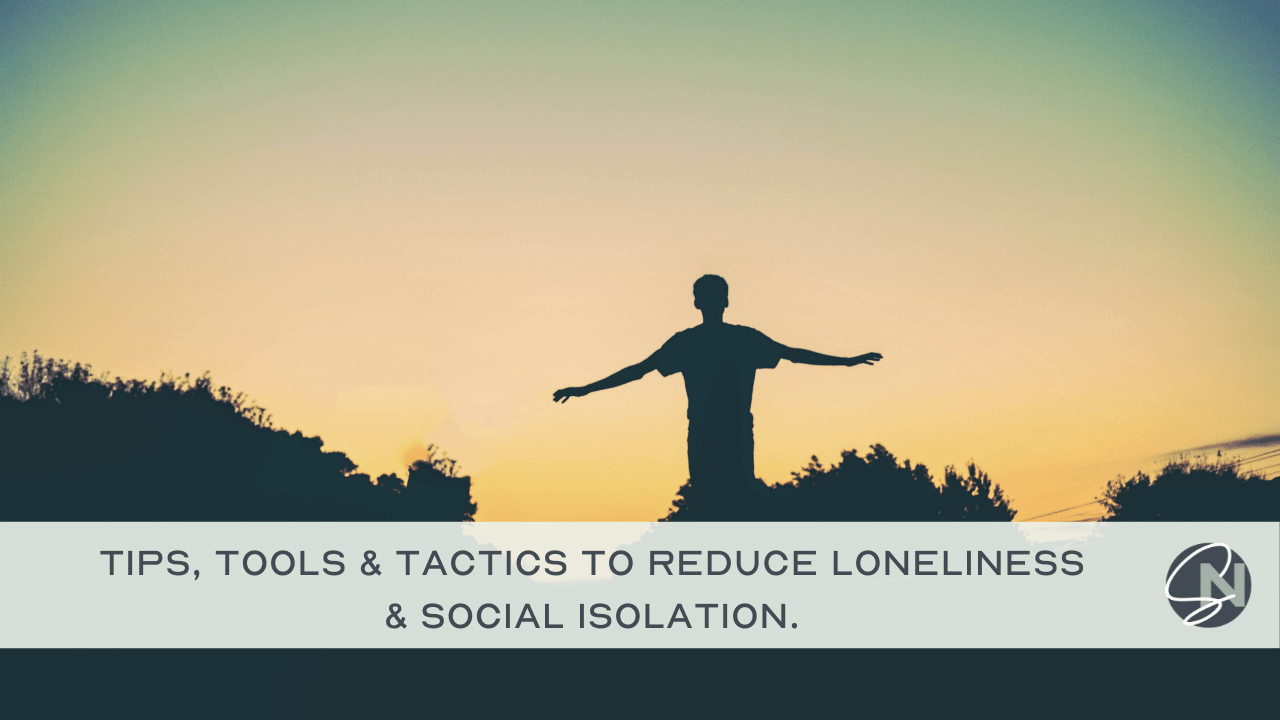Tips, Tools & Tactics to Reduce Loneliness & Social Isolation
There are several practical steps guys can adopt to address the experience of social isolation and loneliness. While it’s quite possible to work through the following steps on your own. Alternatively, working with a mental health professional can offer valuable additional support.
1 - Acknowledgment
Acknowledging your feelings and assessing the impact social isolation has on your life is the first step in addressing it. This acknowledgment might feel uncomfortable, producing anxiety or feelings of vulnerability, self-doubt or shame. If you have had unsuccessful attempts to connect with others in the past, you might even fear being rejected. The truth is, though, everyone has a place and people with whom they belong and the power to create or discover a tribe that makes them feel safe, seen and welcome.
2 - Evaluate
Take some time to evaluate your loneliness. When does loneliness hit you the hardest? What’s happening at the time that you recognize that these feelings occur? Does loneliness happen at work, or during the evening, or on the weekend? What thoughts occurred when you felt alone, or isolated? Write these situations and thoughts down in a journal – this is going to be your benchmark from which to work.
3 - Enhance
It really doesn’t matter how old you are, most of us can always learn how to improve our social skills. For some guys, small talk is more painful than a root canal procedure. However, learning how to connect with others, and fostering conversation takes practice. Encouraging others to talk, requires learning how to initiate and hold a conversation. Asking open-ended questions (the classic - who, what, how type questions) keep the conversation flowing and encourages others to talk about themselves. Developing listening skills ensures that the person we’re talking with, feels seen, heard, and understood - one of the most valuable skills we can develop for human connection.
4 - Engage
Engagement is all about increasing the opportunities for social interaction. What helps a lot of men improve the frequency of interaction, is to consider the things that they enjoy. Interaction via common purpose is the key here. What interests, hobbies or pursuits can you think of that would allow you to connect with others?
For example, taking up a class to learn a new interest, or taking your dog to a park where you can meet other pet owners. Other ideas such as volunteering for something that sparks your interest can be rewarding, or group physical activities, like team sports, are all excellent ways to stay fit and socialize at the same time. The different options for social engagement are limited to one’s imagination.
5 - Prioritize
Scheduling social time can be a challenge for a lot of men, who are juggling work and family responsibilities. Making social interactions a priority is vital to addressing loneliness and isolation. Think of this action as you would when developing any other form of healthy habit.
Social connections can take all matter of forms, and while ideally in-person is better for us, we can connect more frequently via the use of technology. The thing we need to consider is making friendships and social interactions a core focus of our daily practice. Where your focus goes, your energy flows.
6 - Expectations
Not everyone is meant to be a social butterfly or life of the party. Feeling like you have to measure up to societal standards in terms of social interaction can put unnecessary pressure on you. Instead, think of what kinds of interactions fill you up, rather than drain you emotionally, and use that as your compass for increasing your connections.
Also remember, trusted relationships are built over time so give yourself grace during the process. Think of changing your social engagements in the form of incremental action. It all takes time, so imagine yourself taking small, measured steps each day to improve your situation. Write these expectations or goals down, and revisit them periodically.
If you don’t feel like you’re ready or able to set aside a big chunk of time in your schedule for new social commitments, try being more present with the people you already have in your life. Chances are, you have opportunities to interact with others in a more meaningful way, right under your nose. Don’t take for granted the wonderful support network you can find in the co-workers, family members and neighbors you see every day. Making eye contact, asking questions and really listening to the answers, and sitting with someone for a cup of coffee are experiences that build a more fulfilling social circle.
7 - Support
Other than having someone to confide in each week, you might be wondering how therapy can help you address your feelings of loneliness and isolation. First off, don’t underestimate the good it can do to practice sharing your feelings with another person in a completely safe environment. There is no risk of judgment or rejection and a good therapist can help you see from an outside perspective, where you might be blocking connections with other people.
There are times when our social skills need some external input, or we need help challenging and changing some of the negative thoughts or beliefs we hold – that inhibit our ability to connect with others. Therapy can help uncover your social blindspots, so that you can overcome the loneliness. Examining your life and how you interact with others can be an extremely empowering experience. You get to choose how, when and who you develop the connections that instil meaning and purpose – while improving your mental and physical health. It's essentially a win–win situation.
Need more support applying these tips, tools, and tactics? Contact me to schedule a consultation.
Simon G. Niblock, MA, LMFT, is a licensed psychotherapist, specializing in men’s mental health and wellness. He provides tailored, psychotherapy services and online programs for men and is the author of the Anxiety Workbook for Men, Evidence-based Exercises to Manage Anxiety, Depression, and Worry.

